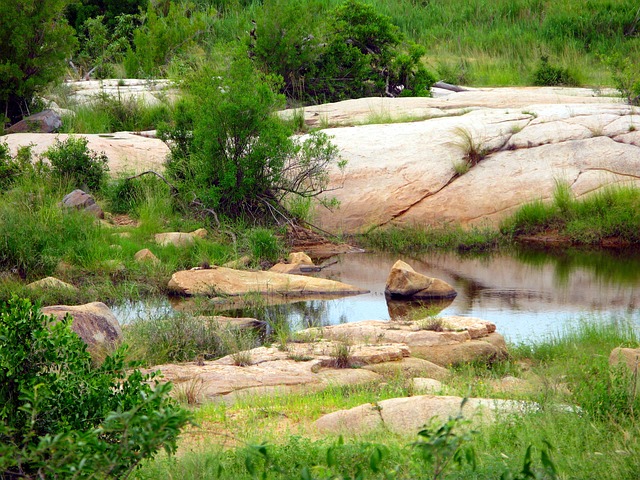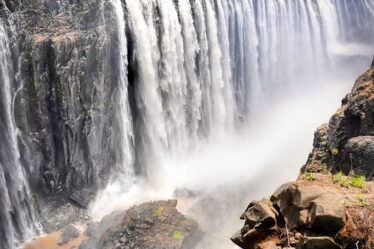
Kruger National Park, one of Africa’s largest and most famous game reserves, is a paradise for wildlife enthusiasts, nature lovers, and adventure seekers. Spanning nearly 20,000 square kilometers in northeastern South Africa, Kruger offers an unparalleled safari experience with its diverse ecosystems, abundant wildlife, and rich history. This comprehensive guide will explore everything you need to know about visiting Kruger National Park, from its fascinating wildlife and best safari experiences to accommodation options and travel tips.
Overview of Kruger National Park
Kruger National Park was established in 1898 to protect the wildlife of the South African Lowveld. Today, it is part of the Great Limpopo Transfrontier Park, which also includes protected areas in Mozambique and Zimbabwe. The park is renowned for its diverse habitats, which range from dense forests and open savannahs to riverine systems and rocky outcrops.
Key Facts
- Location: Northeastern South Africa, spanning the provinces of Limpopo and Mpumalanga.
- Size: Approximately 19,485 square kilometers (7,523 square miles).
- Established: 1898.
- Flora and Fauna: Home to over 500 bird species, 147 mammal species, 114 reptile species, and a vast array of plant life.
Wildlife in Kruger National Park
Kruger National Park is a premier destination for wildlife viewing, offering the chance to see the “Big Five” (lion, leopard, elephant, buffalo, and rhinoceros) as well as a host of other fascinating animals.
The Big Five
- Lion: Known as the “king of the jungle,” lions are often seen in Kruger, particularly in the central and southern regions of the park.
- Leopard: These elusive and solitary cats are most often spotted in the early morning or late afternoon.
- Elephant: Kruger is home to a large population of African elephants, which can be seen throughout the park.
- Buffalo: Cape buffalo are commonly found in large herds, particularly near water sources.
- Rhinoceros: Both black and white rhinos inhabit Kruger, with white rhinos being more frequently spotted.
Other Notable Wildlife
- Cheetah: These fast predators prefer open savannahs and are often seen in the central and southern parts of the park.
- Giraffe: Easily spotted due to their height, giraffes are common throughout Kruger.
- Hippos and Crocodiles: Found in the park’s rivers and waterholes.
- Wild Dogs: Also known as African painted dogs, these endangered predators are a rare but exciting sight.
- Birdlife: With over 500 species, Kruger is a birdwatcher’s paradise, featuring species such as the southern ground hornbill, martial eagle, and lilac-breasted roller.
Best Safari Experiences in Kruger National Park
Self-Drive Safaris
Kruger National Park is one of the few major African parks where visitors can enjoy self-drive safaris. This allows for flexibility and the opportunity to explore at your own pace.
- Routes: There are numerous well-maintained roads and routes, ranging from main tarred roads to more secluded gravel roads.
- Sightings: Popular areas for sightings include the southern regions around Skukuza and Lower Sabie, known for their high concentrations of wildlife.
Guided Game Drives
For a more immersive experience, consider joining a guided game drive led by experienced rangers.
- Morning and Evening Drives: These are prime times for wildlife viewing, as animals are most active during the cooler hours.
- Night Drives: Discover nocturnal creatures and predators on the hunt with the help of spotlights.
Walking Safaris
Walking safaris offer a unique and intimate way to experience the park’s wildlife and landscapes.
- Guided Walks: Led by armed and knowledgeable rangers, these walks allow you to track animals and learn about the ecosystem up close.
- Wilderness Trails: Multi-day hiking trails provide an in-depth exploration of Kruger’s remote areas, with overnight stays in basic camps.
Photographic Safaris
Kruger is a paradise for photographers, offering stunning landscapes and abundant wildlife.
- Specialized Tours: Join a photographic safari with professional guides who can help you capture the perfect shot.
- Best Spots: Popular photography locations include the Sabie River, the Shingwedzi area, and the Pafuri region.
Accommodation in Kruger National Park
Kruger offers a wide range of accommodation options to suit different budgets and preferences, from luxury lodges to basic campsites.
Rest Camps
Rest camps are managed by South African National Parks (SANParks) and offer a variety of accommodation types.
- Skukuza Rest Camp: The largest camp in Kruger, offering bungalows, safari tents, and camping sites. Facilities include a restaurant, shop, and swimming pool.
- Lower Sabie Rest Camp: Known for its excellent wildlife sightings, this camp offers similar accommodation options and facilities.
- Satara Rest Camp: Located in a prime game-viewing area, Satara offers bungalows, cottages, and camping facilities.
Luxury Lodges
For a more exclusive and comfortable stay, consider one of the luxury lodges located in private concessions within Kruger.
- Singita Lebombo Lodge: Offers stylish suites with stunning views, gourmet dining, and exceptional game drives.
- Lion Sands Narina Lodge: Known for its luxurious treehouse accommodations and excellent service.
- Sabi Sabi Earth Lodge: A unique lodge with a focus on sustainability and luxury, featuring private suites and personalized safari experiences.
Bushveld Camps
These smaller, more intimate camps offer a quieter and more secluded experience.
- Talamati Bushveld Camp: Located in a rich game-viewing area, this camp offers self-catering cottages and a tranquil atmosphere.
- Bateleur Bushveld Camp: Known for its excellent birdwatching opportunities and comfortable accommodations.
Camping
For budget-conscious travelers, Kruger offers several campsites with basic facilities.
- Balule Satellite Camp: A rustic camp with basic facilities, offering a true wilderness experience.
- Maroela Camp: A small, quiet campsite located near the Orpen Rest Camp.
Dining in Kruger National Park
Most rest camps and lodges offer dining options ranging from casual eateries to fine dining restaurants.
Camp Restaurants
- Skukuza Cattle Baron: Known for its delicious steaks and burgers, this restaurant offers indoor and outdoor seating.
- Mugg & Bean (Lower Sabie): Offers a variety of meals, including breakfast, sandwiches, and hearty mains, with a view of the Sabie River.
- Tindlovu (Satara): Serves traditional South African dishes and international cuisine.
Bush Braais
Experience a traditional South African braai (barbecue) in the bush, offered by some camps and lodges.
- Guided Braai: Enjoy a delicious meal under the stars, accompanied by the sounds of the African bush.
- Private Braai Facilities: Some campsites and accommodation units have private braai facilities for self-catering.
Fine Dining
Luxury lodges often offer gourmet dining experiences with a focus on local ingredients and flavors.
- Singita Lebombo: Offers a sophisticated dining experience with expertly crafted dishes and an extensive wine list.
- Lion Sands: Features a variety of dining options, including bush dinners, boma dinners, and in-suite dining.
Travel Tips for Visiting Kruger National Park
When to Visit
- Dry Season (May to October): The best time for wildlife viewing, as animals congregate around water sources and vegetation is less dense.
- Wet Season (November to April): The park is lush and green, with abundant birdlife and fewer tourists. However, wildlife can be harder to spot.
Getting There
- By Car: Kruger is accessible by car from major cities such as Johannesburg and Pretoria, with well-maintained roads leading to the park’s entrances.
- By Air: Several airports serve the Kruger area, including Kruger Mpumalanga International Airport (MQP) and Skukuza Airport (SZK). Direct flights are available from Johannesburg, Cape Town, and other major cities.
Park Regulations
- Speed Limits: Adhere to the speed limits within the park to ensure safety and avoid disturbing wildlife.
- Stay in Your Vehicle: Except at designated areas, always remain in your vehicle to avoid dangerous encounters with wildlife.
- Respect Wildlife: Maintain a safe distance from animals and avoid making loud noises or sudden movements.
What to Pack
- Clothing: Pack lightweight, neutral-colored clothing for the daytime and warmer layers for the cooler mornings and evenings. A hat, sunglasses, and sunscreen are essential.
- Binoculars and Camera: Essential for wildlife viewing and capturing memories of your safari.
- Insect Repellent: To protect against mosquitoes and other insects, especially during the wet season.
Health and Safety
- Malaria: Kruger is a malaria-risk area, so consult your doctor about prophylactics and take precautions such as using insect repellent and sleeping under mosquito nets.
- Vaccinations: Ensure you are up to date with routine vaccinations and consider additional ones such as Hepatitis A and Typhoid, depending on your itinerary.
Conclusion
Kruger National Park is a must-visit destination for anyone seeking an authentic African safari experience. With its diverse wildlife, stunning landscapes, and a range of accommodation options, Kruger offers something for every traveler. Whether you’re exploring the park on
a self-drive safari, enjoying guided game drives, or indulging in luxury at one of the private lodges, your time in Kruger will be unforgettable. Plan your visit to this iconic park and immerse yourself in the beauty and wonder of the African wilderness.
